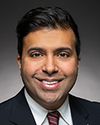I've had meetings and direct conversations with people in that industry on an international basis. The reality is that even if a gun looks like a toy gun and has the orange cap on the end of it or is a completely different colour, or looks like a nerf gun, there are ways it can be converted to be real. There's no perfect solution to this, as I understand.
For example, when a gun that looks exactly like a Glock, which is the gun we carry at the Regina Police Service, is brought out and used in the commission of an offence, most of the time even police officers, in the heat of the moment, can't determine whether the firearm is real or not. It does pose an absolute threat. Oftentimes victims who are facing the barrel of one of these replica firearms have the reaction that it's real.
As I mentioned earlier, often what we're seeing are follow-up consequences. There's an initial threat when a house is rushed and some people are robbed, and what is present is a replica firearm. Then a week later we have a homicide because of retaliation that happened as a result of that initial incident. It poses threats at all levels.
I think the more we can stray from having replicas look exactly like a real firearm, the better it would be for community safety.




